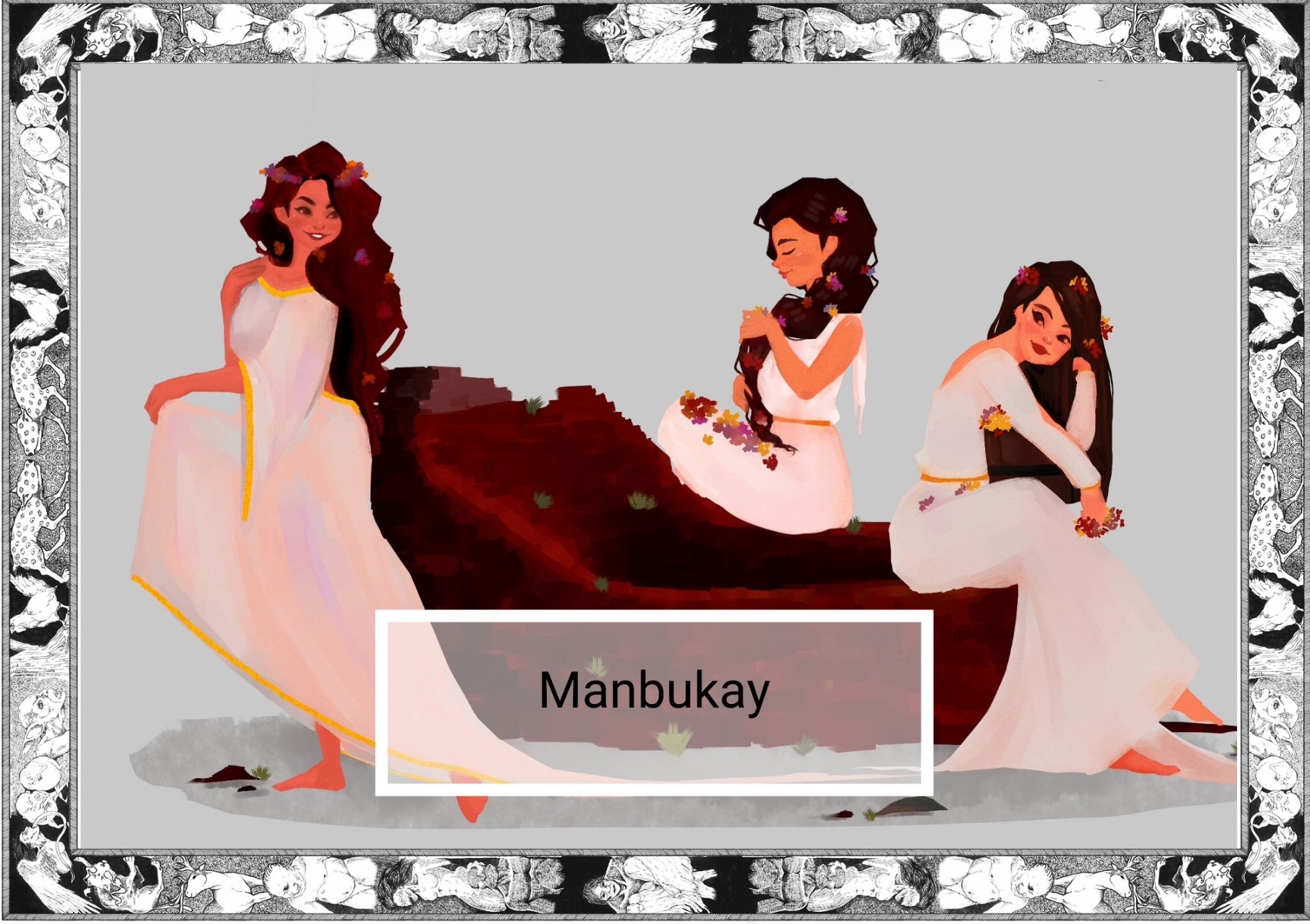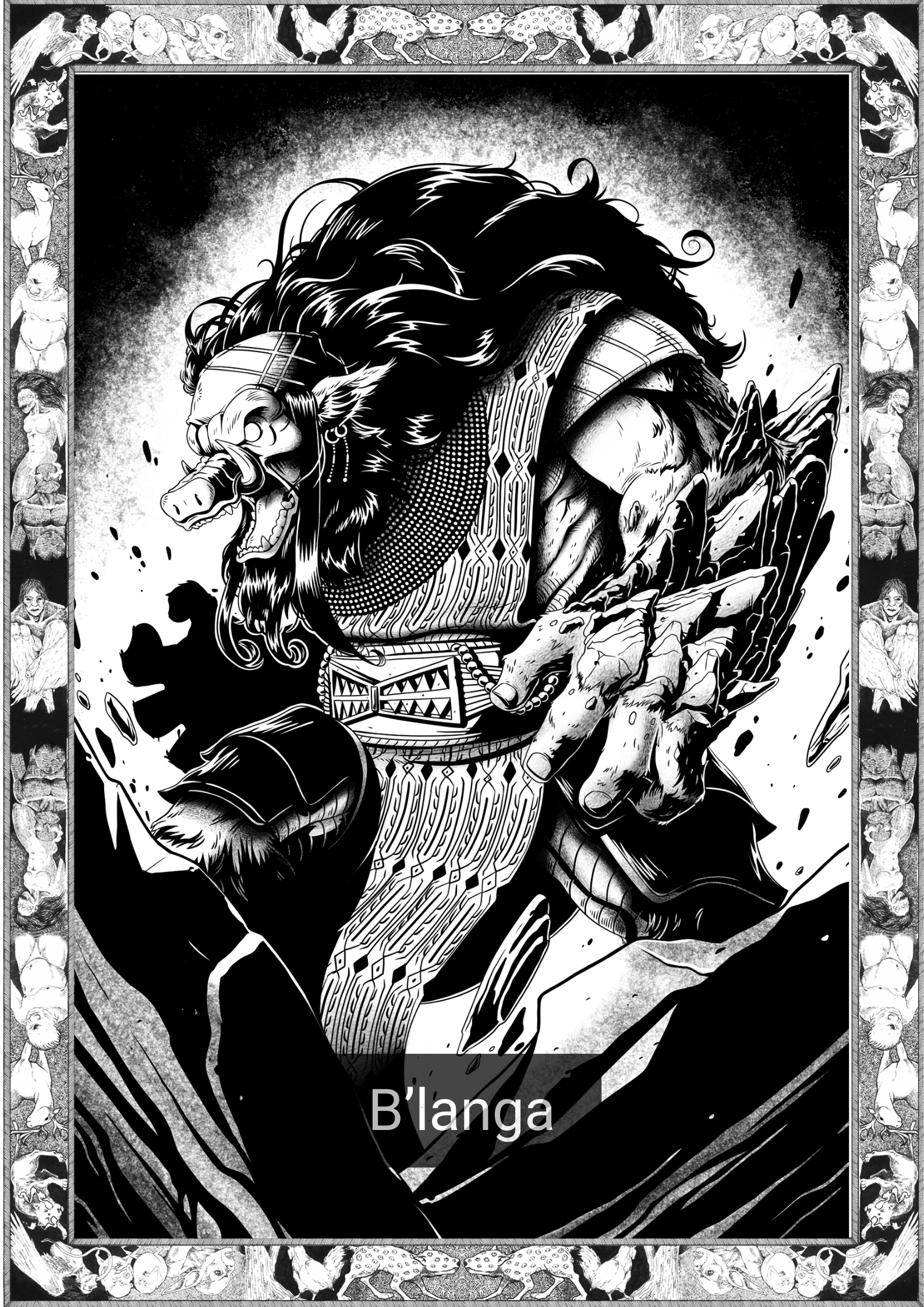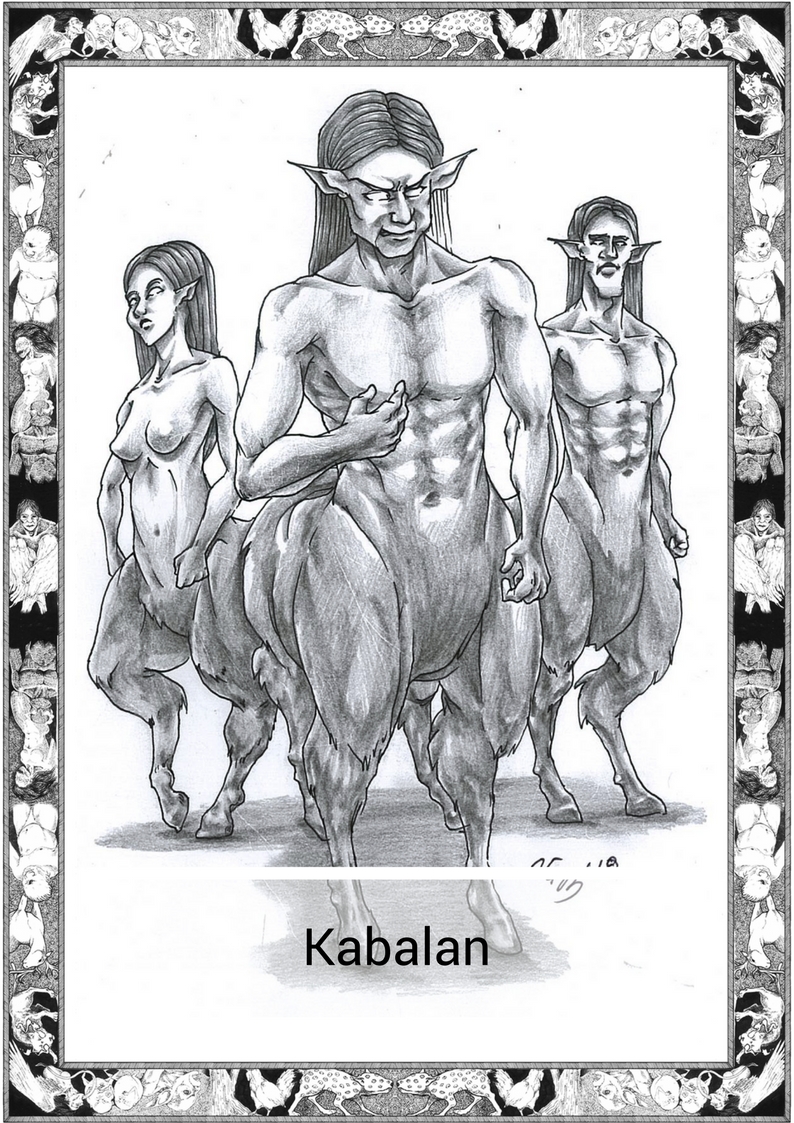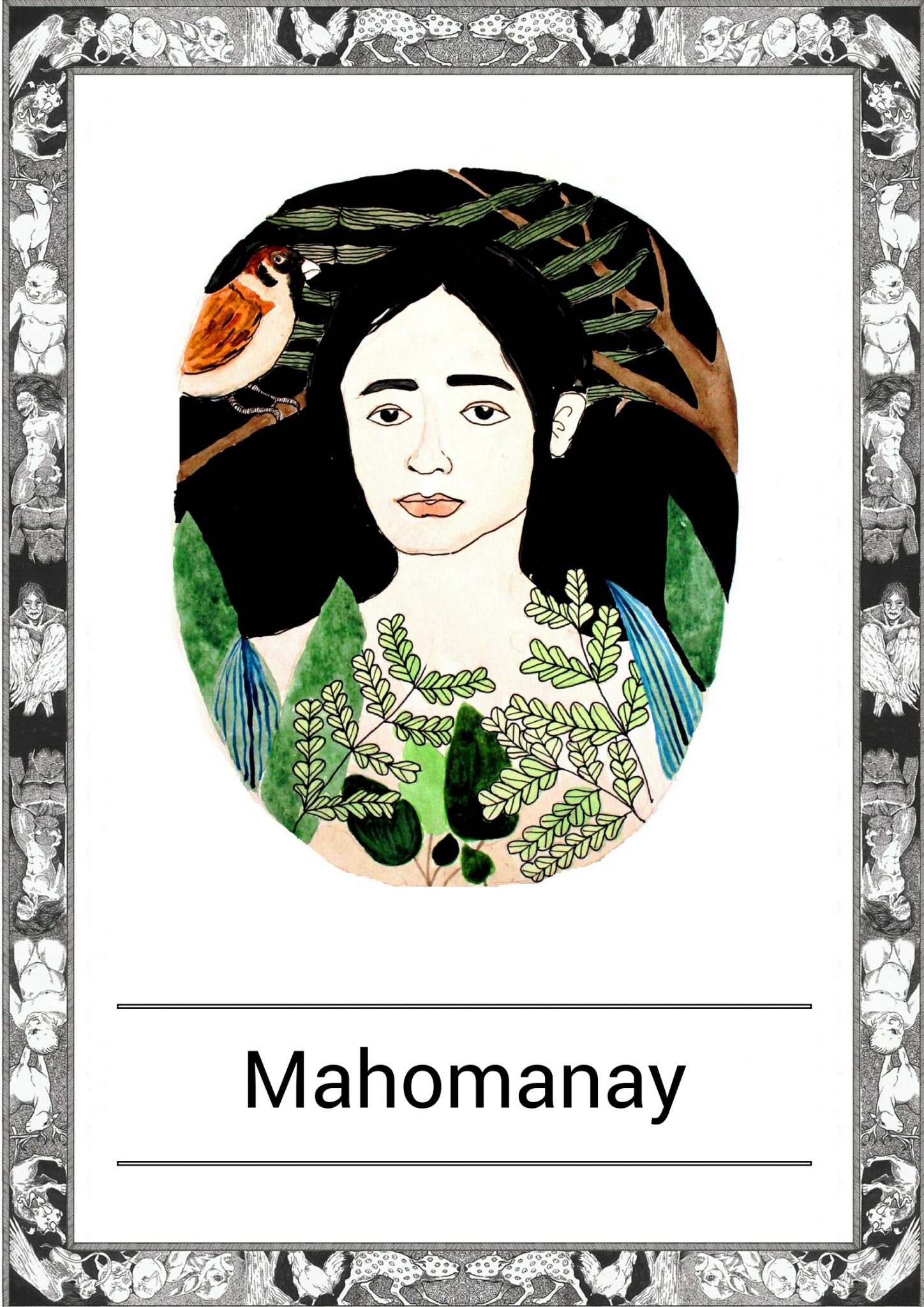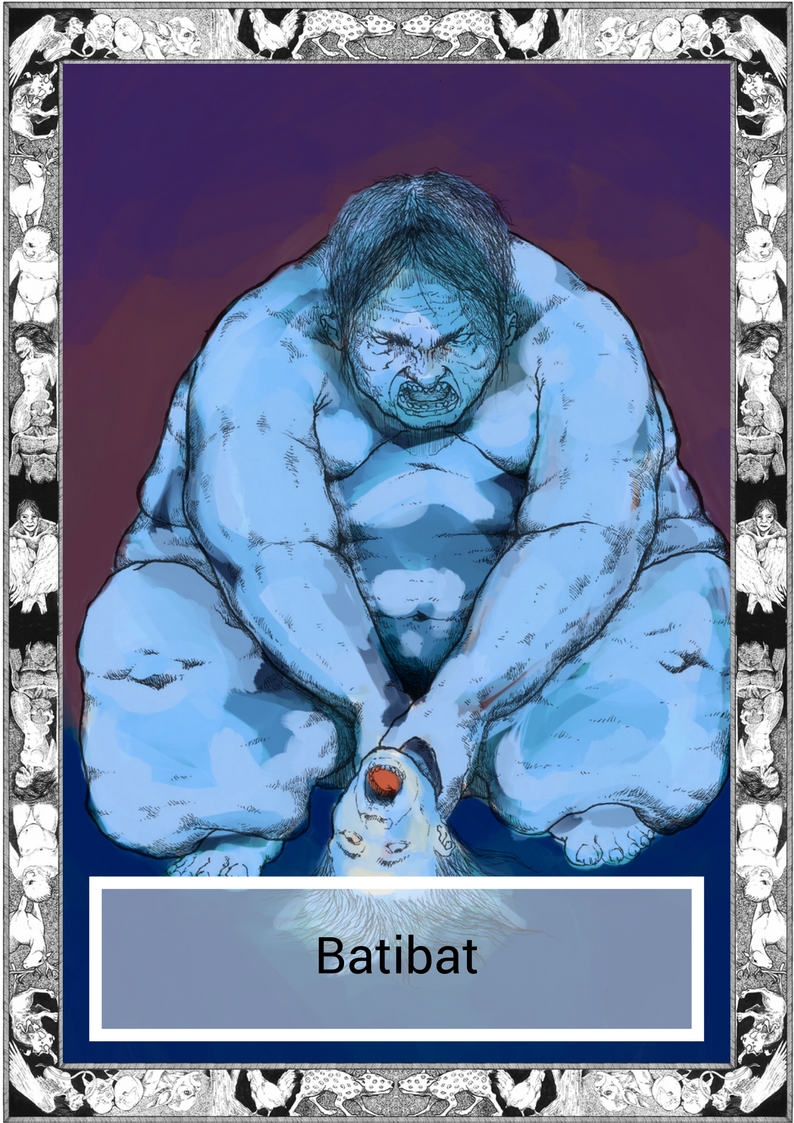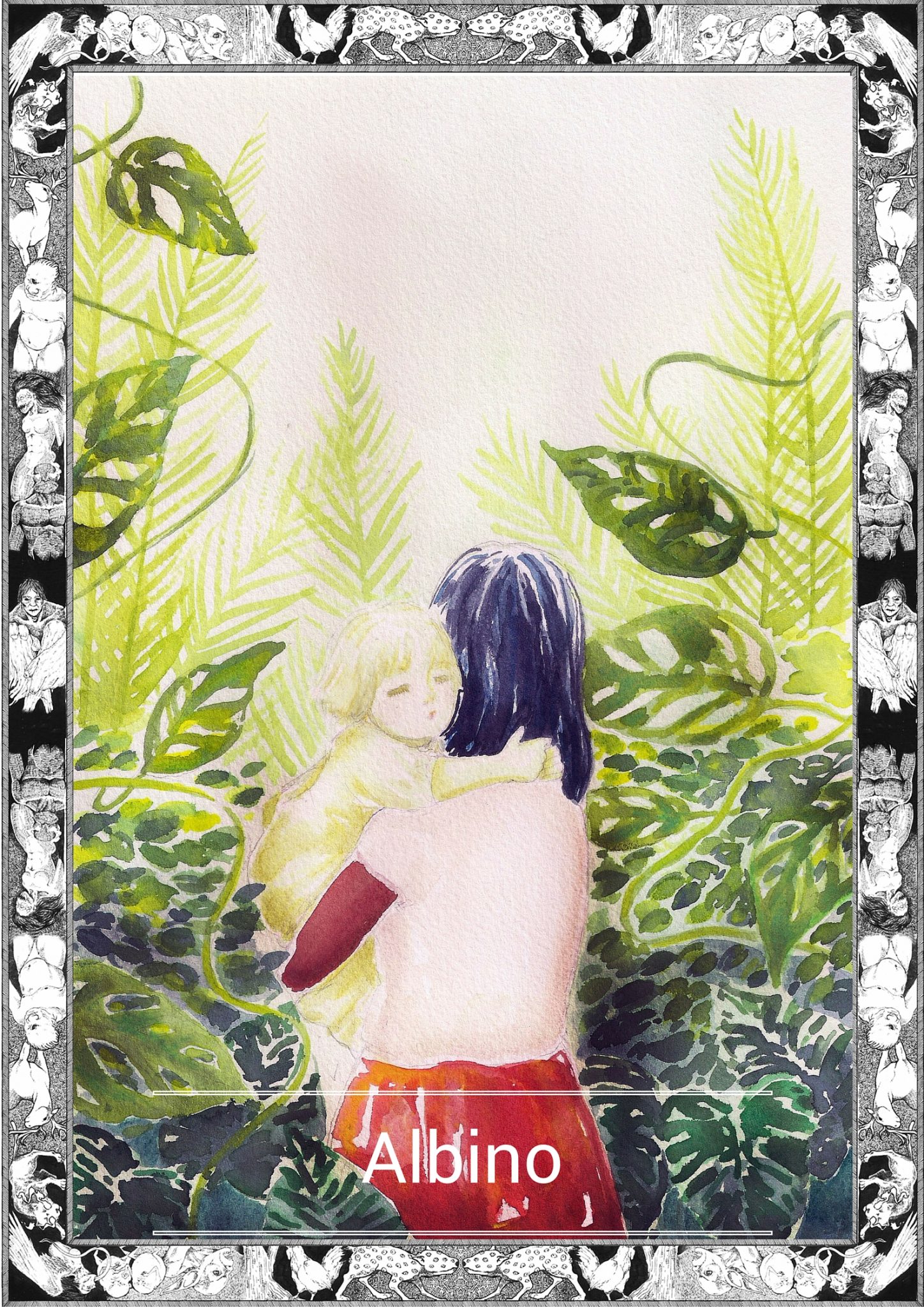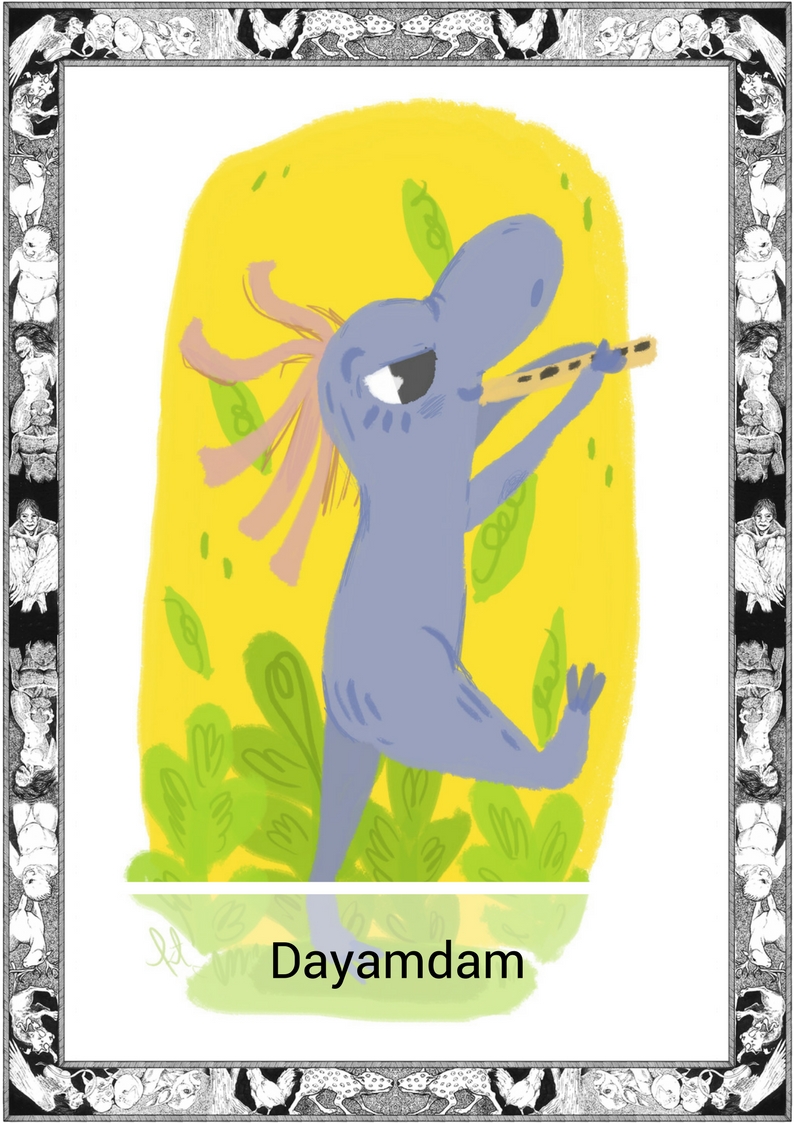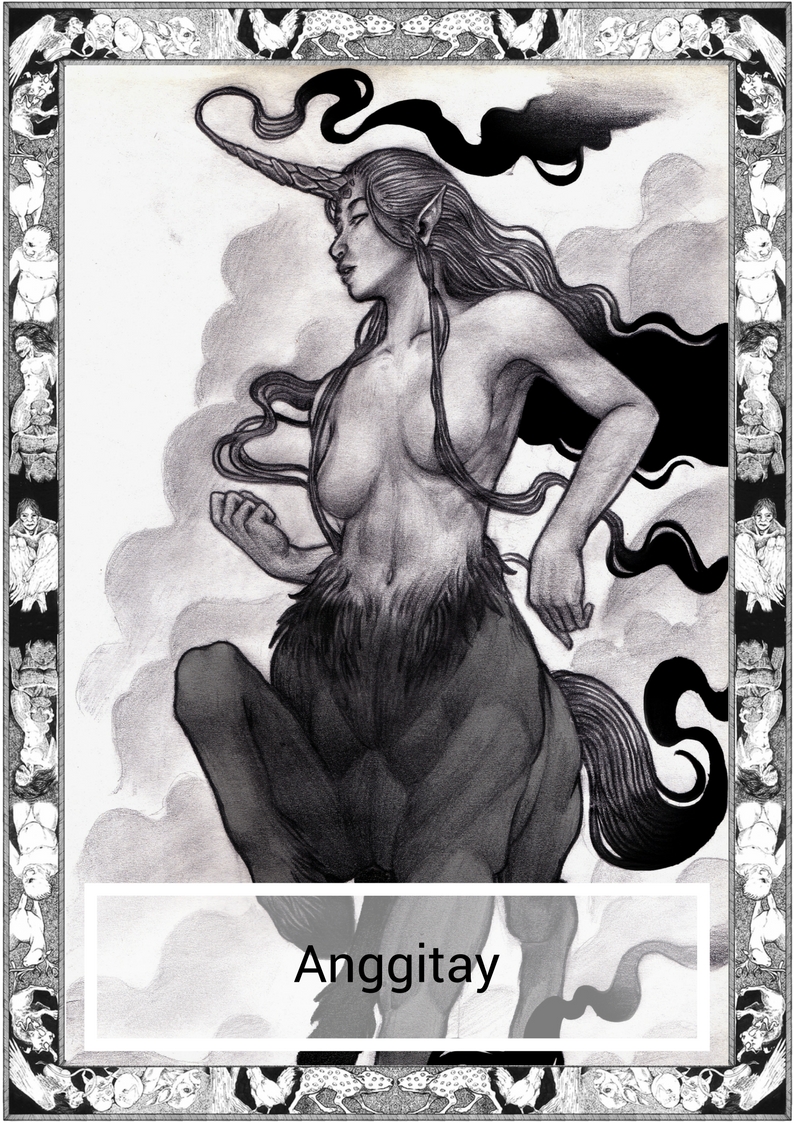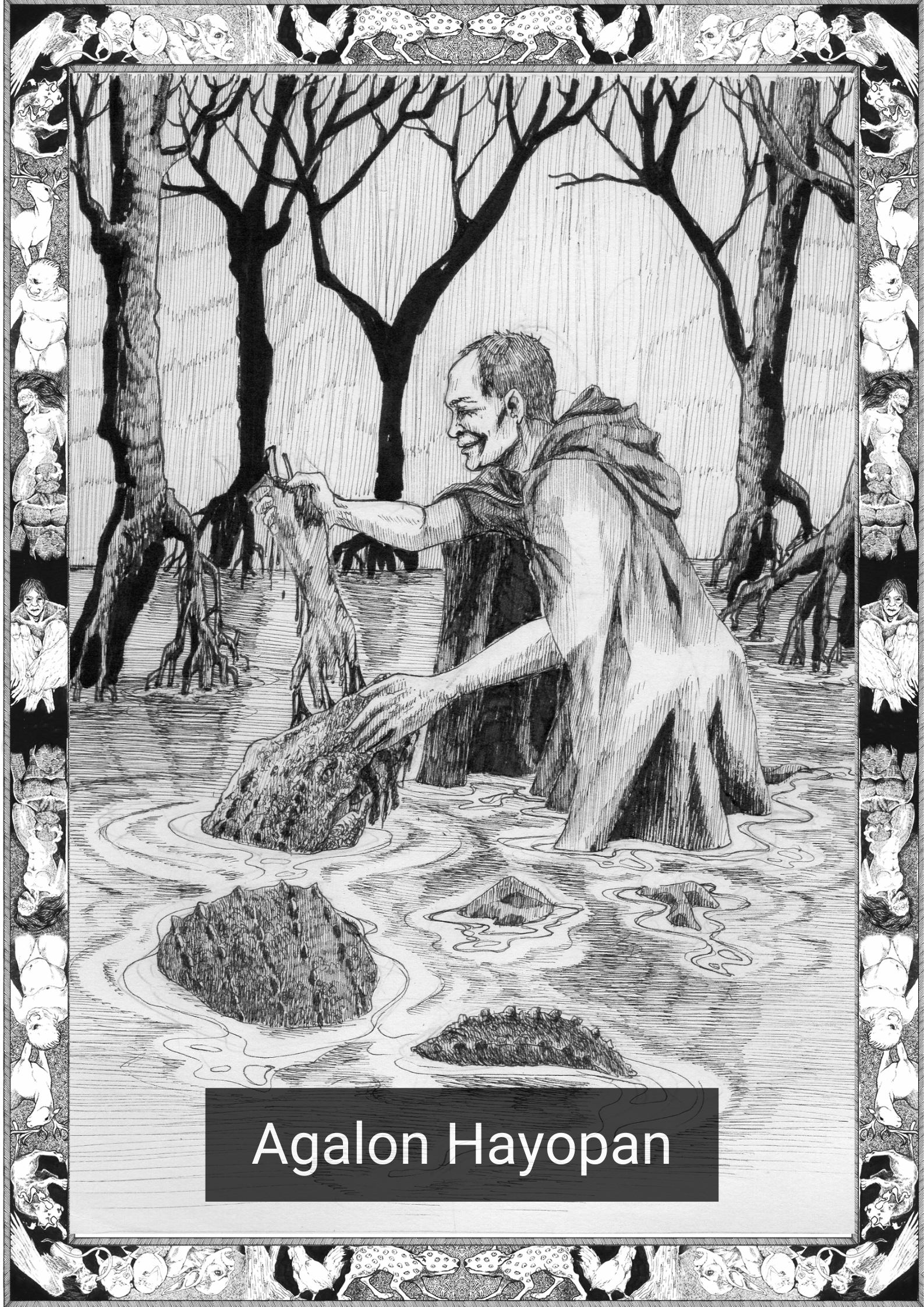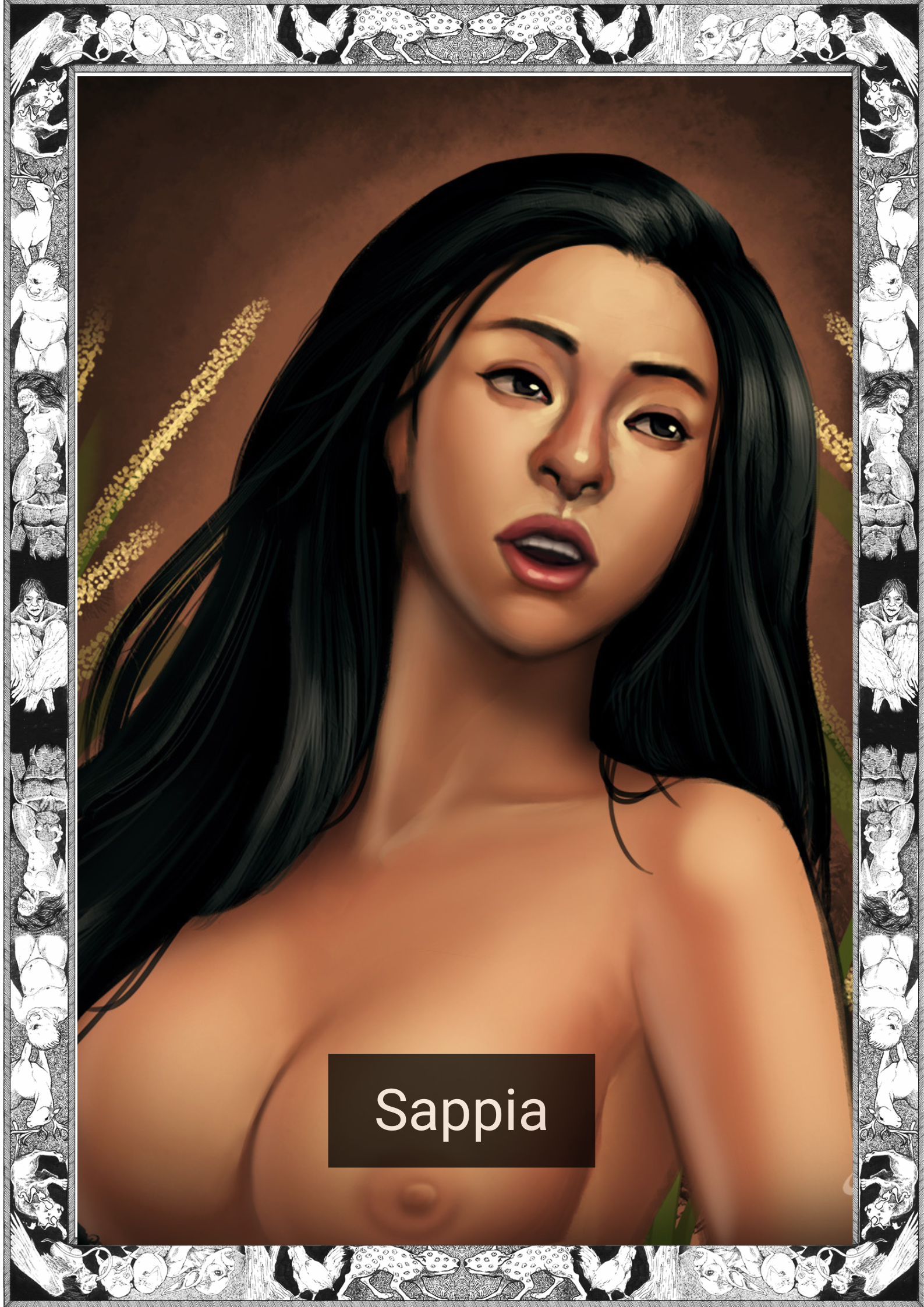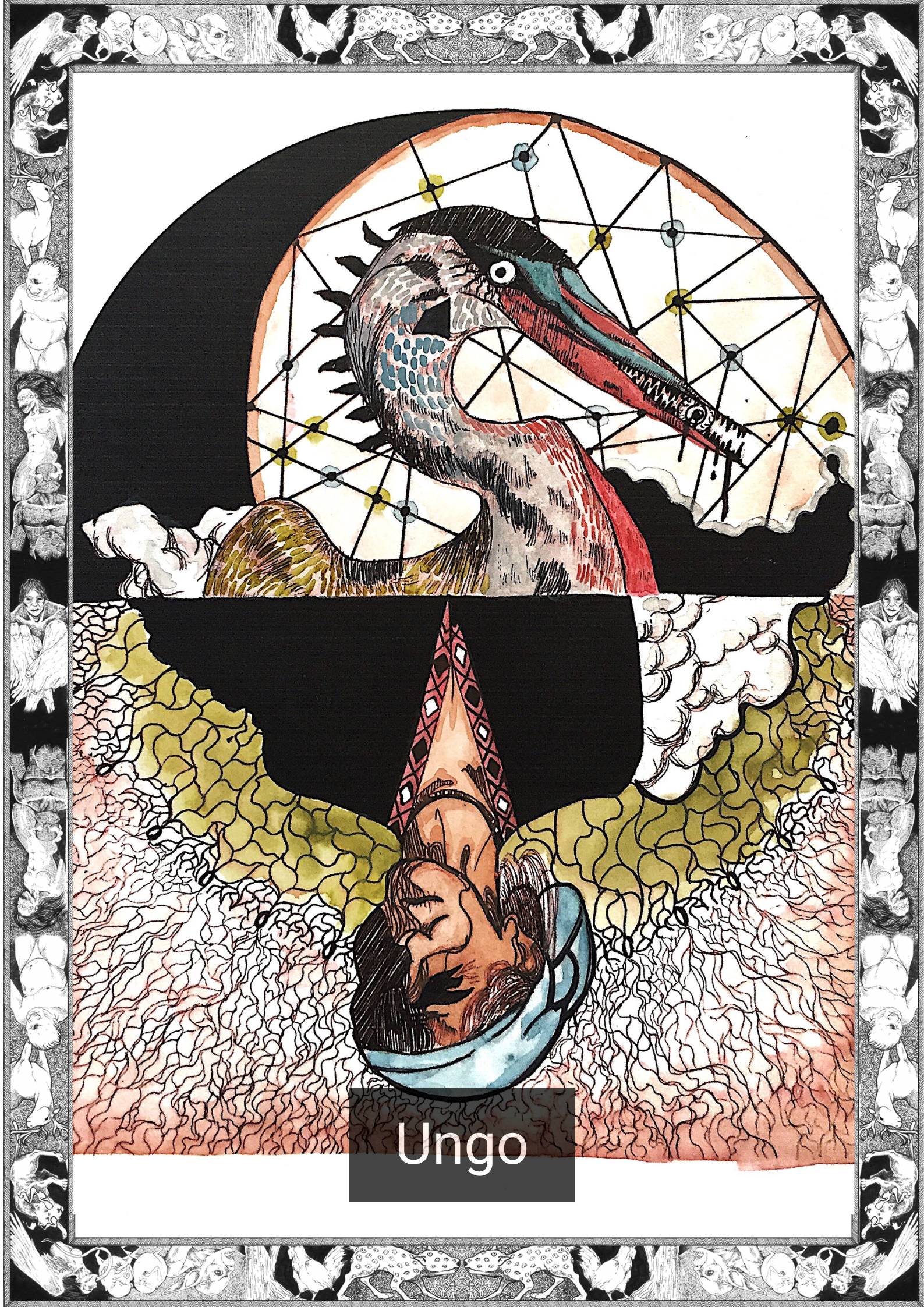
*Note this story is in Ilocano
Idi un-unana a panawen, adda nataengan nga agassawa nga saan a maaddaan iti anak. Kada rabii, itag-ay da ti kararagda iti langit agingga a naammuan ti babai isun ket masikogen. Idi maipasngay ti anakda, napalalo ti kinapintas daytoy ket naidir-i dagiti nagannak,” Awanen ti napimpintas pay ngem ti anak ta. Uray daytay kapintasan a tumawo ket saan a maidilig iti anak ta.”
Intayab ti angin dagiti balikasda iti nasipnget a kabakiran ken kadagiti kangangatuan nga ulep agingga a nakadanon dagitoy iti lapayag dagiti tumawo nga agnanaed iti maysa a narabaw a bubon, saan unay nga adayo iti pagtaengan dagiti agassawa.
Saan nga impagarup dagiti agassawa a daydiay naisawang da ket rubroban na ti panagapal dagiti espiritu. Napagnunumuan dagiti espiritu nga masapul nga bayadan ti ubing dagiti naisasao ti nagannak na.
Dagitoy a tumawo ket naanos kas iti kina-agnanayonda.. Naimatangan da ti panagdakkel ken ad-adda nga ipipintas ti ubing. Uray dagiti adda iti adayo a lugar ket nadamagda ti maipapan iti ubing ken ti awan agpaiduma a kinapintas daytoy.
Kimmaro ti panagilem dagitoy a tumawo. Nangngeg da dagiti senyales a maibugas iti samiweng dagiti billit.
“ Isu ti init nga agpangato iti law-ang. Mabendisyona nga agnanayon dagiti masagid ti lawagna.”
“ Saan a maartapan dagiti amin a sabsabong iti lubong ti kinaraniagna.”
“Nagtaud kadagiti matana dagiti rimat ti kinaagnanayon. Awan ti makakitakit iti imatangna.”
“Saan nga masarmingan ti danum ti pudno nga daeg na.”
Ita, dagiti maudi a balikas ket nangted ti nauneg a sugat iti kaunggan dagiti espiritu nga aggigian iti narabaw a bubon. Para kaniada, nasagraduan unay ti danum ket ti pangibbet iti kasdiay a sasao ket mangparnuay ti pungtot.
Iti maika-sangapulo ket lima nga tawen ti panagkasangay ti balasitang, inrussuat dagiti espiritu ti panggep da.
Iti dayta a rabii, rimmuar ti balasitang idi makaturogen ti pamilya na, ket linagip na ti kinasangsangayan dayta nga aldaw. Adu ti naawat na a sagut manipud kadagiti agraraem kaniana- narimat nga al-alahas ken nakaayayat a balitok. Imbilangna dagiti init ken bulan kas tulnek laeng nga mangsilnag iti pigura na.
Nasinga ti panaglaglagipna gapu iti maysa a samiweng a kasla mangay-ayab kaniana. Saan na a malappedan ti kinapintas dayta nga uni ket rinuggian na ti nagna a nangsurot iti gubbuayan daytoy.
Iti bubon, nagsusupiat dagiti espiritu.
“Ilemmes tayo dayta nga nakasur-suron nga kattubo. Bassit la a minutos, ket malpasto aminen; satayto ipatulod ti nabulok a bangkayna kadagiti dadduma nga tattao tapno mabuyada no kasano a talaga ti kinapintas daytoy a prinsesa.”
“Saan! Rumbeng nga maikkan ti dusa nga atiddog ken in-inut. Iti unos ti sangapulo ket lima nga tawen, inibturan tayo dagiti insulto iti langa tayo. Kayatko nga agsagaba met kas kadatayo.
Naglalaban ken nagpipinnasagid dagiti espiritu, ngem awan latta ti naurnos da a katulagan.
Agingga a maysa a timek ti naguni manipud iti uneg ti bubon. “Kakabsatko a tamawo, dagitoy patangan tayo maipanggep iti dusa ken panangparigat ket saan na masebseban ti pungtot tayo. Immanamong dagiti tattao nga awan ti makaasping ti pintas daydiay a balasitang. Masapul a paneknekan tayo a nagbiddut da.
“Ania ti kayatmo ngarud nga aramiden mi?”
“Makitayonto.”
Nagtakder ti balasang iti abay ti bubon. Ammona no ania ti mapaspasamak ti bagina ngem saan na nga makontrol daytoy.
Manipud iti bubon, rimsua ti maysa a napintas a babai. Ammo iti puso ti balasang a maysa a datdatlag daytoy a babai, kas iti pannakaestorya ti apongna a lakay.
“Pangngaasim ta palusposannak,” impakaasi ti balasang.
“Adda nadagsen unay a basol ti pamilyam kadagiti espiritu.”
“Ania ti kayat mo a sawen?Awan ti inaramidmi a pakadangran da.”
“Saan kadi a pudno nga inwarwaragawag dagiti tattao iti kabangibang a lugar a napinpintas ka ngem dagiti espiritu?”
“Wen, ngem ang-angaw laeng daydiay. Agpas-pasaw da laeng.”
“Ti pagarupek ket saan. Kas met ti inaramid mo.”
“Awan ti imbagbagak!”
“Kasta kadi? Ngem ania ti napasamak iti panagkasangay mo?”
“Awan ti napasamak!”
“Ania ti imbagam kalpasan a naawat mo dagidi sagutmo?
“Awan. Ang-angaw ko laeng!”
“ Ania. Ti. Imbagam?”
Nagayus ti lua iti pingping ti balasang.
“Imbagak a siak laeng ti napateg. Nga awan ti naparsua, awan ti espiritu, awan ti uray maysa a didiosen a makaartap ti pintas nga adda kaniak.
“ Tinupraam ti rupa dagiti espiritu. Awan ti makaartap ti kinapintas nga adda kadakami. Maysaka laeng a tao, ken saan nakam to a pulos na makapada.
Nagulimek ti balasang. Nariknana ti panagkapsut ti engkantasyon a mangigawgawid kaniana, ngem imbes nga agtaray, sinangona ti espiritu.
“Saan mo nga ammo ti ibagbagam.Sika nga maag a baka! Saan mo kadi nga ammo no kasano ti kinapintasko wenno awan kadi ti matam? Maaramid mo ti kaykayatmo kaniak, ngem kanayon, kankanayonto nga maammuam a napimpintas daytoy a tao ngem ti aniaman a tumawo!”
“Maituredmo ti di mangrespeto.”
“Saan. Ibagbagak laeng ti kinapudno. Malaglagipdanto a siak ti kapipintasan iti daytoy a lugar ken iti sabsabali pay, ngem dayta rupam, awan man la ti agka-interes a kadaywan a tao.
“Maag a balasang! Ngem mabalin nga husto ka. Napinpintas ka nga amang ngem ti panangipagarupko kenka. Ngem adda ammok a wagas tapno ibaga dagiti tattao ken espiritu nga dagiti tumawo ti kapipintasan iti daytoy nga pagturayan ken iti sabali pay.”
“Ania ti aramidem kaniak?”
“Makitam to… kabsat a babai.”
Adu a tawen a pinadas ti agassawa a biroken ti balasangda agingga a ti pannakasair ti pusoda ti nangdadael iti nakapsuten a bagida. Saan a nasungbatan dagiti kararagda ket nagtutuokda gapu iti saem ti panagpukaw ti anakda agingga iti panungpalan da. Naitabonda iti asideg ti pagtaenganda, kadagiti tanem nga awan markana.
Kuna ti dadduma a nalmes ti balasitang iti karayan a saan unay nga adayo ket makita ti al-aliana nga agdaldaliasat kadagiti naliday a daldalan.
Kuna ti dadduma a maysa kadagiti nagarem ti nangitaray kenkuana iti adayo a daga , ket sadiay isu itan ti reyna, kontento a mangusar kadagiti aldawna a mangiranud iti kinapintasna kadagiti iturayanna.
Ngem adda dagiti mamakdaar a maiparit ti mapmapan iti naiputputong a bubon iti asideg ti kabakiran. Kunada a dagiti napintas nga espiritu ti agtataeng dita.. Adda dagiti di mangikankano kadagita a pakdaar ta kunada met a maysa kadagita nga espiritu ti kapipintasan a parsua iti amin a pagturayan. Dagidiay addaan iti sentido komon, ipangagda dagitoy a pakdaar ngem kadagidiay awanan iti rasrasunen, awan ti manglapped kadakuada a mangsirpat uray ti apagdarikmat iti kinapintasna.
============================
English Version
Once there was an old couple who had a difficult time conceiving. Every night they lifted their prayers to heaven until one day the woman found herself pregnant. When their child was born, she was of such profound beauty that her parents exclaimed, “There are none more beautiful than our daughter. Even the fairest tomawo could not compare to her!”
The wind carried their words through the somber forests and lofty clouds until they settled on the ears of those that tamawo that dwelt in a shallow well a fair distance from the couple’s house.
It never crossed the couple’s mind that an exclamation such as that could inflame the envy of those spirits. The spirits agreed that the child would pay for her parent’s words.
These tomawo were as patient as they were eternal. They watched as the child matured, growing even more beautiful. Even those from far-off lands knew of the girl and her unsurpassed loveliness.
The spirits grew even more embittered. They could hear the signs carried in the melodies of the songbirds:
“She is the sun ascending from the horizon. Those who are touched by her light are blessed forever.”
“All the flowers in the world cannot match her radiance.”
“In her eyes are the flickers of the infinite. No one can resist her gaze.”
“Mere water cannot reflect her true elegance.”
Now those last words cut a deep wound in the spirits’ pride for they dwelt in a shallow well. To them, water was so sacred that to even utter that statement would invoke their wrath.
On the girl’s fifteenth birthday the spirits began their plot.
That night, after her family had gone to sleep, the girl sat outside and reflected on how amazing the day was. She had received gifts from many suitors, dazzling jewels and breathtaking gold. She felt that the sun and moon were mere dots that served to light her figure.
Her rumination was interrupted by a sweet harmony, beckoning her near. She could not resist the sound’s charm and started walking to its source.
In the well the spirits bickered.
“We should drown that irritating upstart. A few minutes and it will all be over, then we can send her bloated corpse to the other humans to show just how pretty this ‘princess’ actually is.”
“No! We should make her punishment long and slow. For fifteen years we had to endure those insults that were thrown at our own beauty. I want to her to suffer as we have.”
The spirits fought and threw taunts at each other, but they were still no closer to an agreement.
Until one voice reverberated through the well.
“My tamawo sisters, all this talk of pain and suffering will not sate our resentment. The humans agreed that there was no spirit that could ever be as beautiful as this girl. We must prove them wrong.”
“What would you have us do then?”
“You shall see.”
The girl stood beside the well. She was fully aware of what her body was doing, but she could not control it.
From the well rose a beautiful woman. In her heart the girl new that the woman was a supernatural like her grandfather would tell of in his stories.
“Please let me go,” the girl begged.
“Your family has committed a grave sin against the spirits.”
“What do you mean? We’ve done nothing to harm you.”
“Is it not true that the humans across this land and others have proclaimed you as more beautiful than the spirits?”
“Yes but that was just a joke, they were exaggerating.”
“I don’t think they were. Or you were, for that matter.”
“I didn’t say anything!”
“Oh really? Then what happened at your party?”
“Nothing happened!”
“What did you say after you received your gifts?”
“Nothing! It was just a joke!”
“What. Did. You. Say.”
Tears welled out down the girl’s cheeks.
“I said that I was the only thing that mattered. That no being, not a person, not a spirit, not even a god could ever reach the beauty I have.”
“You spit in the face of the spirits. There are none that hold beauty such as we do. You are nothing but a human and you will never equal us.”
The girl grew silent. She could feel the spell that kept her still fade away, but instead of running she faced the spirit.
“You don’t know what you’re talking about! You stupid cow! Do you know how gorgeous I am or do you not have eyes! You can do what you want with me, but you will always, ALWAYS, know that this human is more beautiful than any tomawo will ever be!”
“You dare throw disrespect?!”
“No, I am just telling the truth. I will be remembered as the greatest beauty in this land and others, while your stupid face can’t even interest a normal person!”
“Foolish girl. But you may be right. You are beautiful, more than I care to admit. I do know one way to have humans and spirits alike say that the tamawo are more beautiful than anything in this realm and others.”
“What are you going to do to me?”
“You shall see…. Sister.”
The couple spent years trying to find their daughter until their heartbreak took a toll on their frail bodies. Their prayers were unanswered and they were tormented with the pain of loss until the end. They were buried near their home, in unmarked graves.
Some say the girl drowned in a river not too far away and her ghost could be seen roaming lonely paths.
Others say that one of her suitors carried her to a far-off land where she is now queen, content to spend her days sharing her beauty with her subjects.
But there are those that warn against going to an isolated well near the forest. They say that beautiful spirits make it their home. There are those that ignore those warnings for it is also said that one of those spirits is the most beautiful being in all the realms. Those with common sense would heed these warnings but for those without logic, nothing will stop them from seeing a glimpse of her beauty.
*Tomawo are beautiful spirits like the engkanto.
*Ilocano is the third most-spoken local language of the Philippines.An Austronesian language, it is related to such languages as Malay (Indonesian and Malaysian), Tetum, Chamorro, Fijian, Maori, Hawaiian, Samoan, Tahitian, Paiwan and Malagasy. It is closely related to some of the other Austronesian languages of Northern Luzon, and has slight mutual intelligibility with the Balangao language and the eastern dialects of the Bontoc language.
Written by Karl Gaverza
Ilocano translation by Maria Jesusa Villaruz
Copyright © Karl Gaverza
Translation Copyright © Maria Jesusa Villaruz
Inspired by the Manbukay description in The Remnants of the Great Ilonggo Nation. Sebastian Sta. Cruz Serag. 1997.
Manbukay illustration by Gabrielle Solera
IG: @gbsolera
